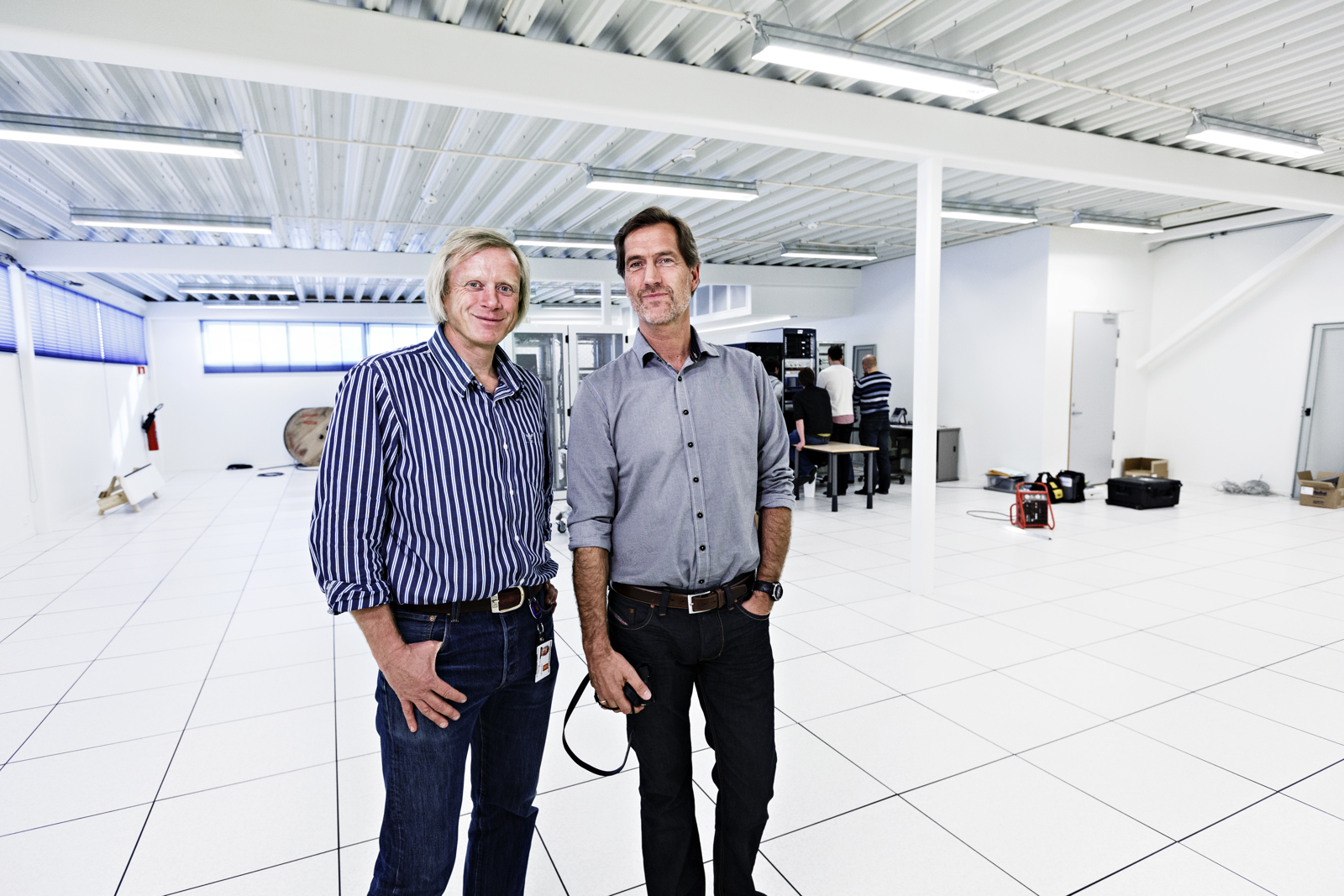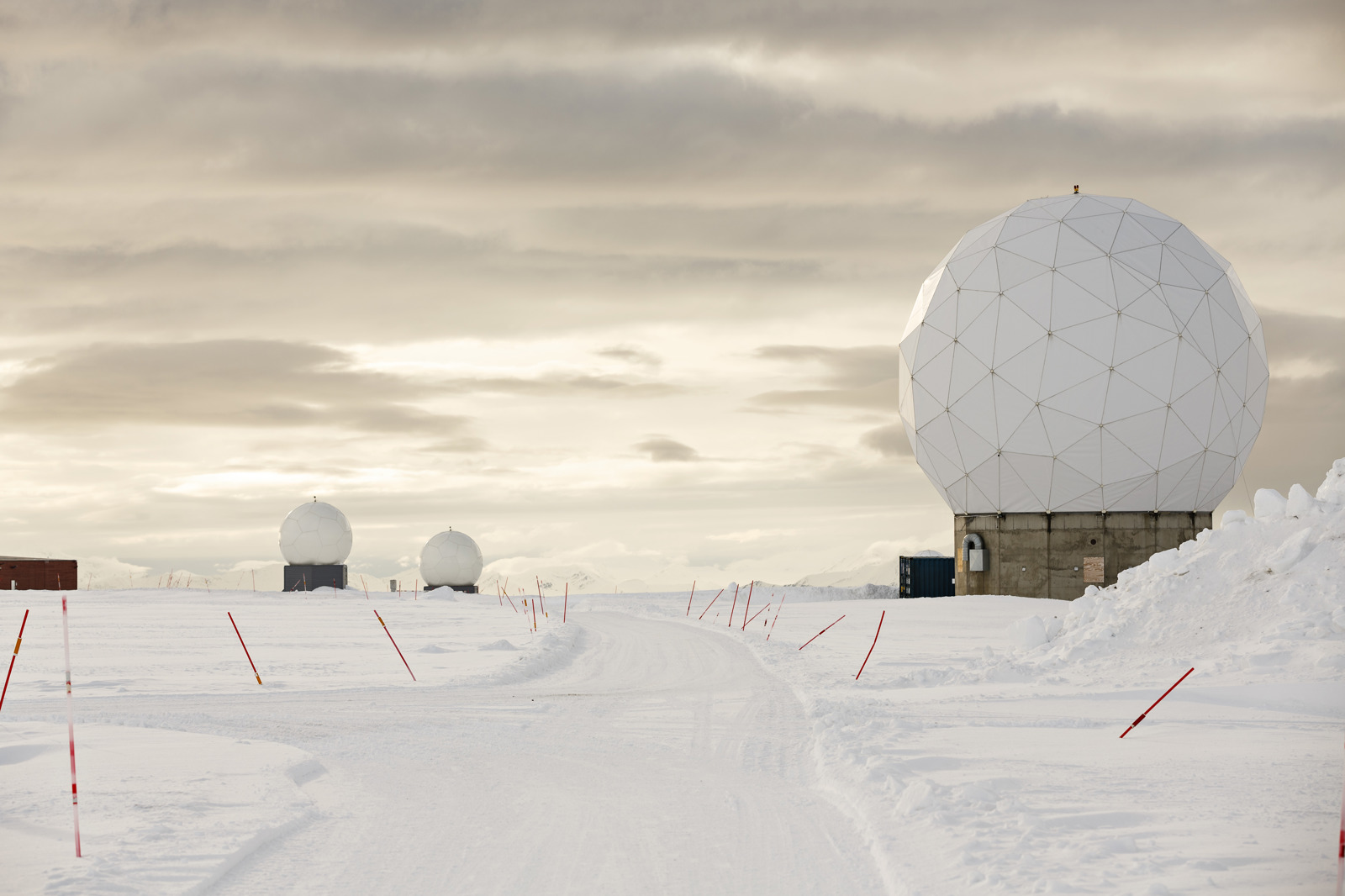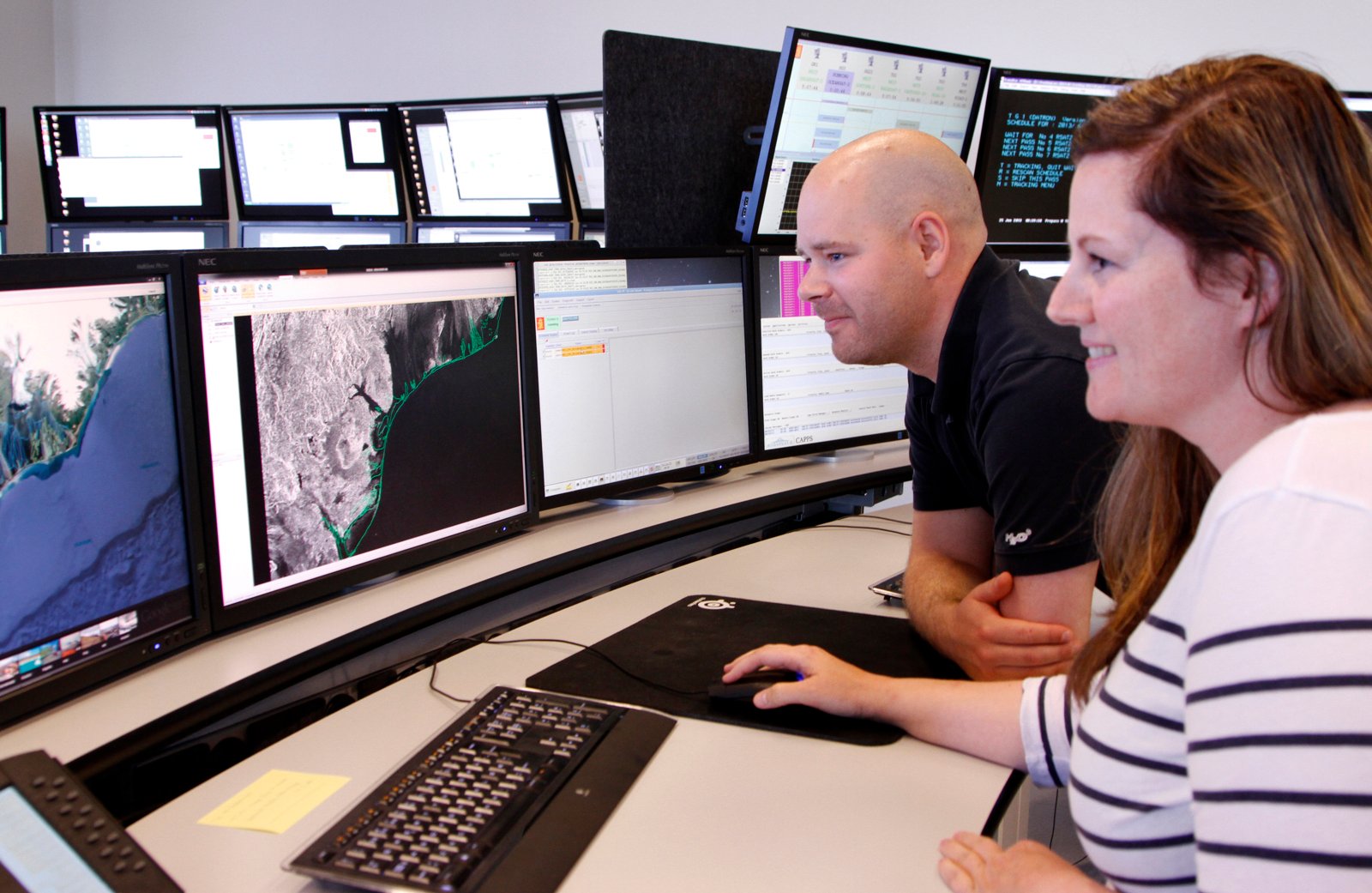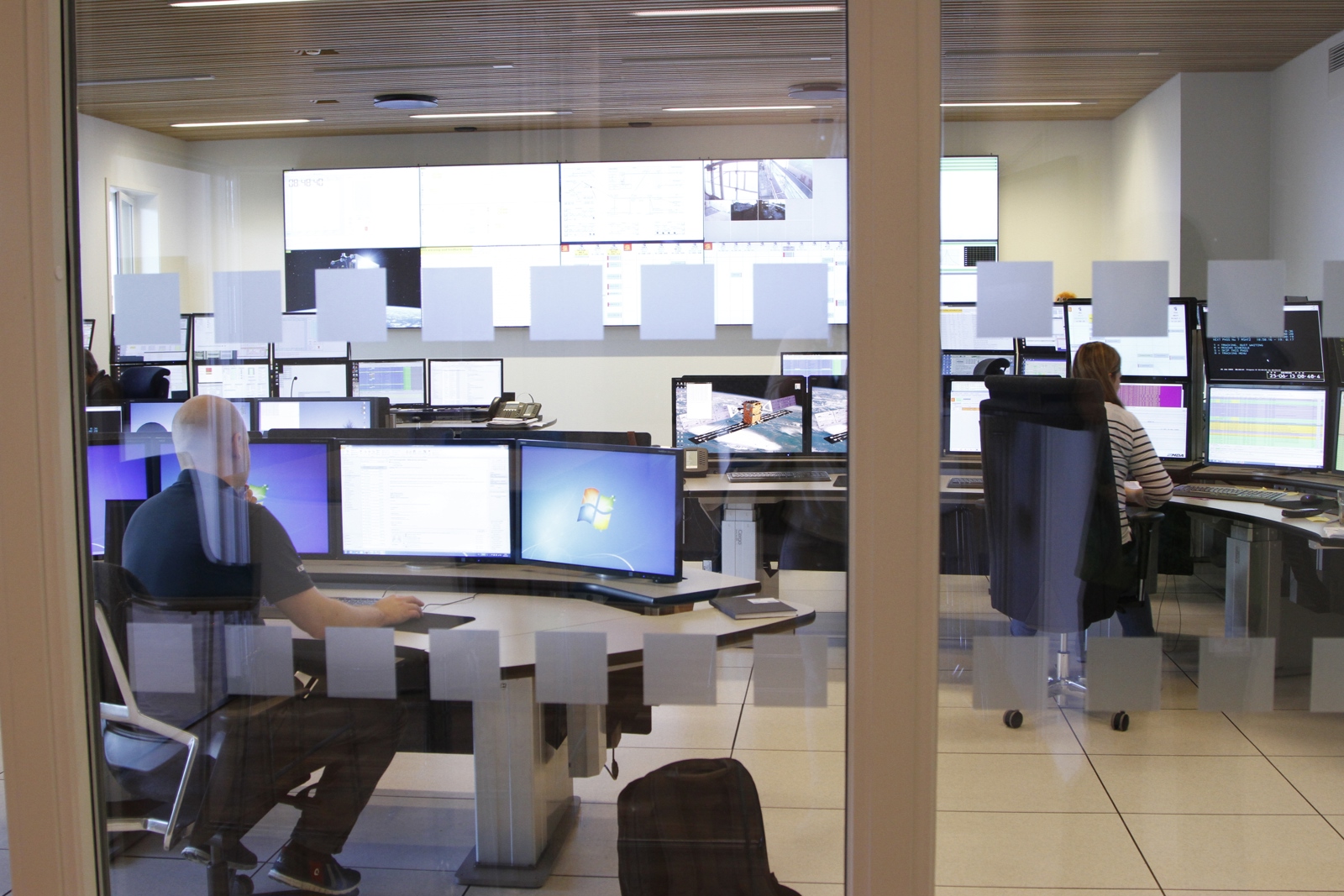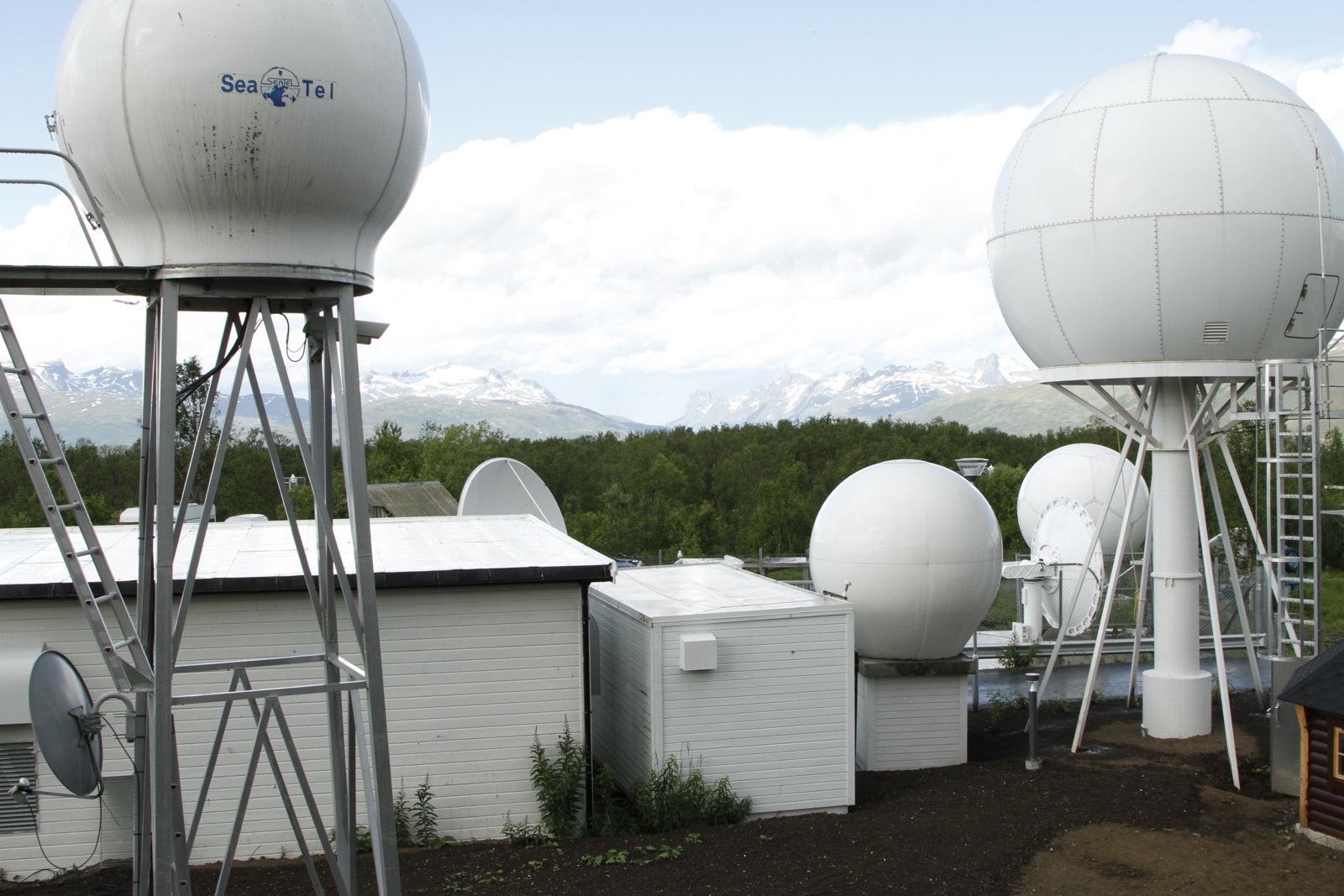The new operations room for processing satellite data was completed earlier this year. This is the workplace for production engineers Cathrine Waage and Jon Christian Richards, where they help international oil companies and the coast guard services to detect environmental crime, such as oil leaks. Their business segment is known as earth observation services and they mainly deliver and develop services related to observations of oil spills, vessels and ice/icebergs.
HELPING DETECT ENVIRONMENTAL CRIME
Over the last two years, KSAT has been awarded contracts which cover different international waters. The company’s services are ever more relevant and in demand as oil and gas activities move into areas where conditions are increasingly difficult and exposed. Not only have the statutory requirements on monitoring increased in scope and stringency, the oil and gas companies have realised the importance of having improved control of their own operations in these areas.
“There is most definitely an increase in interest in our products. We now receive requests directly from customers who are interested in our services, this is new for us,” explains Marte Indregard, Vice President Oil & Gas.
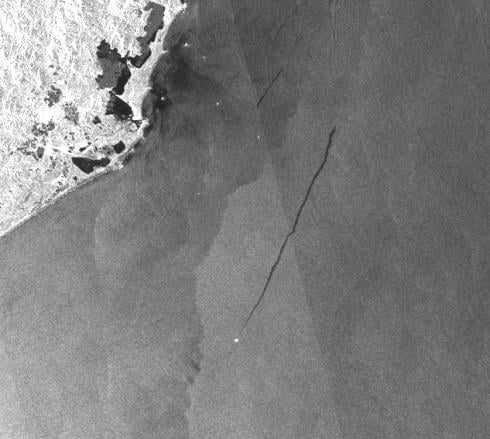
The detection of oil spills on satellite images from waters in Mexico, Brazil and Australia is more demanding than in Nordic waters. Coral reefs, areas with natural oil spills, a lot of shipping and oil rigs, these all make it more difficult to identify the source of an oil spill.
“Oil forms an inhibitive membrane on the movement of the water’s surface so we always look for dark lines on images when trying to detect oil spills. The fact that algae growths have the same effect on the water’s surface makes our job all the more difficult. It’s decisive that we are able to read and systematise all identified factors,” explains Cathrine Waage.
HIGH PRESSURE ON TIME
The new operations room is like something taken from an American action or science fiction movie.
One wall is covered in large flat screens. These display the movement of and data from 70 satellites out in space. In front of the wall of screens are three rows of desks. The desks have a number of monitors which the production engineers use to collate and analyse the data.
“The period of time from five in the morning to ten o’clock is our most hectic. In the space of those five hours, we often have to deliver 25 different images, some with a deadline as short as 20 minutes. With such pressure on time, we have to make some tough decisions quickly,” explains production engineer Cathrine Waage. She has worked for KSAT since 2005.
